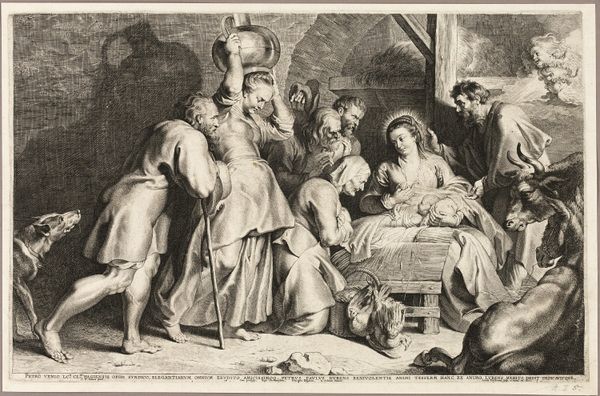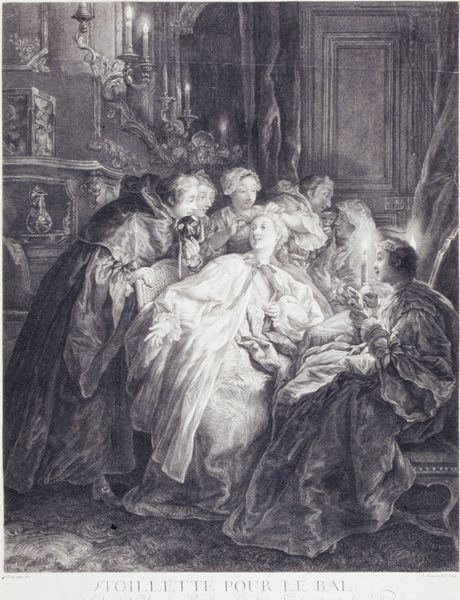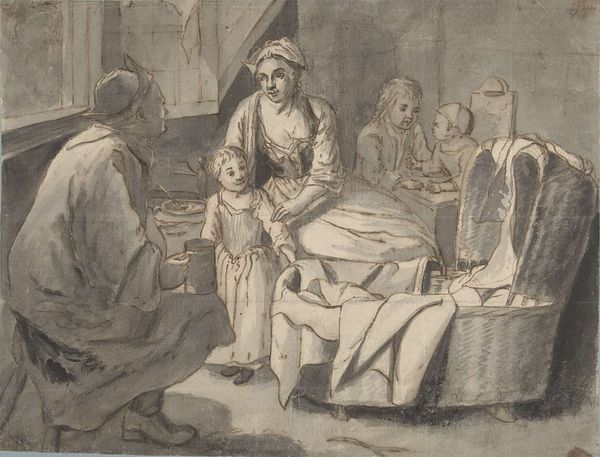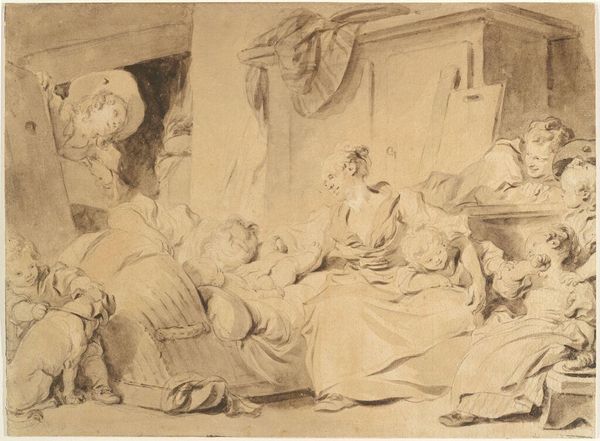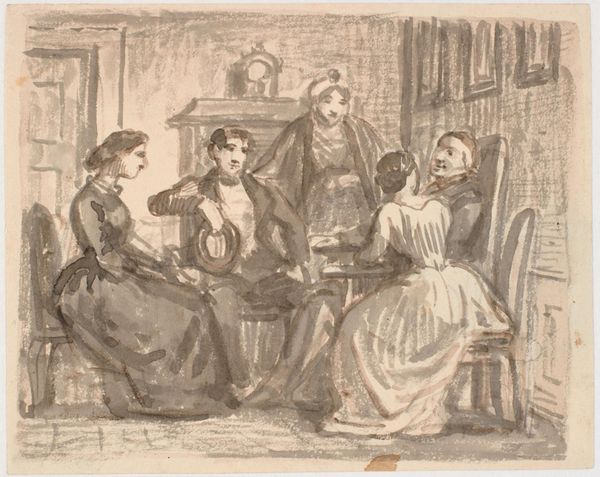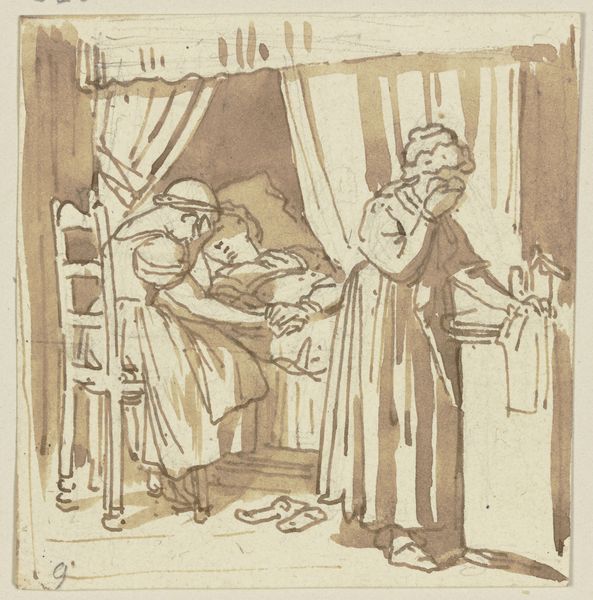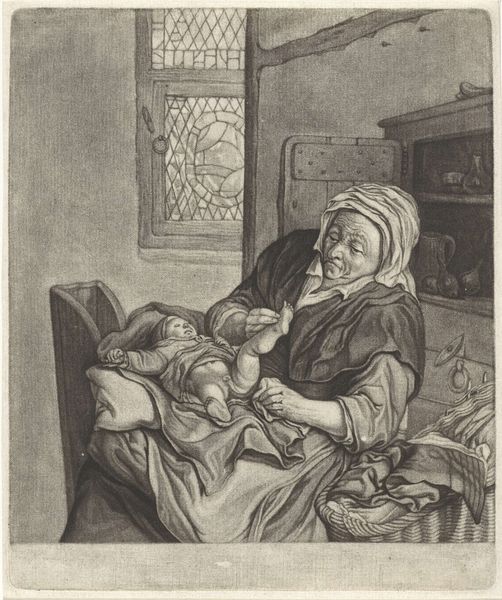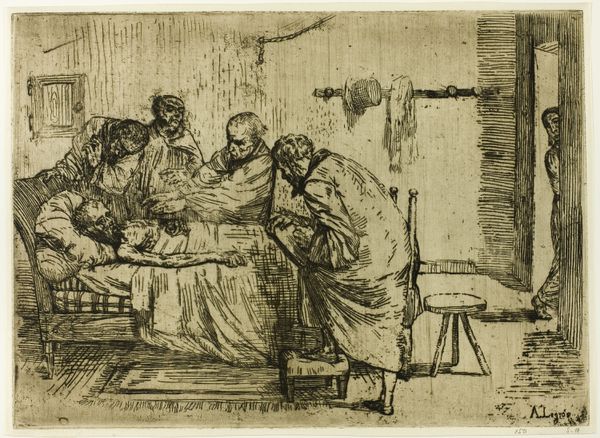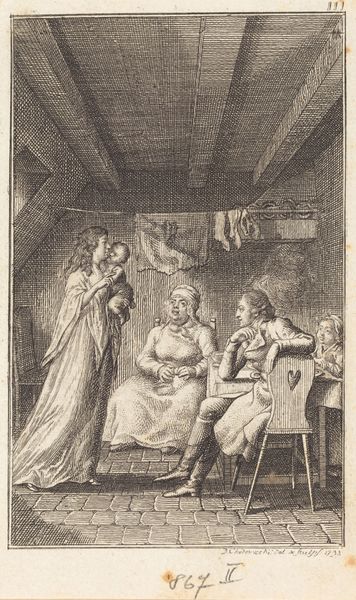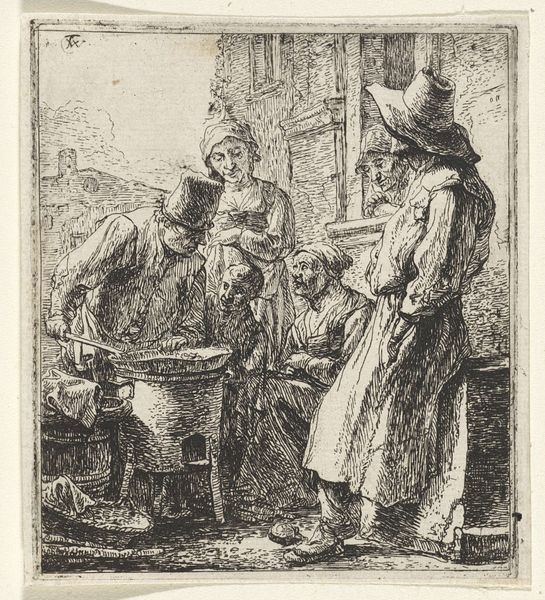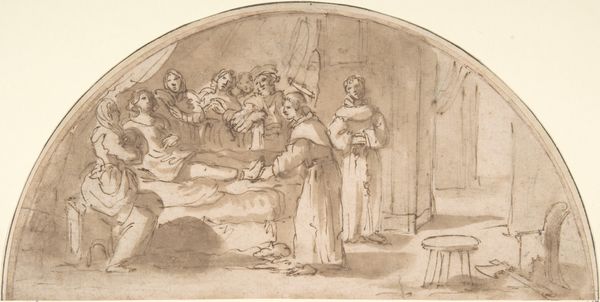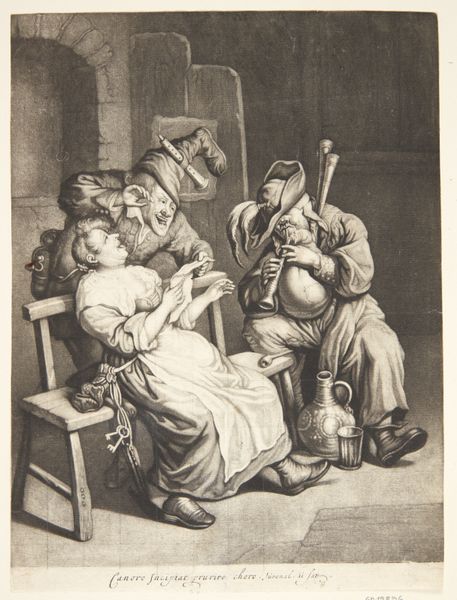
drawing, pencil, pen, charcoal
#
portrait
#
drawing
#
narrative-art
#
pencil sketch
#
charcoal drawing
#
pencil drawing
#
pencil
#
pen
#
portrait drawing
#
genre-painting
#
charcoal
#
portrait art
#
realism
Dimensions: height 162 mm, width 220 mm
Copyright: Rijks Museum: Open Domain
Editor: So, this is "De terugkeer van Klaasje Zevenster bij haar moeder" – "The Return of Klaasje Zevenster to Her Mother" – a drawing from 1888 by Willem de Famars Testas, made with pencil and charcoal, it looks like. It has this really intimate feel. It seems to be capturing a private, domestic moment. What do you make of it? Curator: Looking at the work through a materialist lens, the most compelling aspects are the textures and details achieved with simple tools, pencil and charcoal, rendering this layered drawing with precision. I see not only an intimate portrayal but also an insight into the socio-economic context through its careful detail: The interior—look at the details in the shoes on the shelf! How does this imagery and the medium used convey, perhaps, a broader story of labor and class in 19th-century Netherlands? Editor: That's interesting. I hadn't thought about the economic context so directly. The details like the shoes now seem to suggest working-class life and a very detailed, manual world, especially given how much time someone had to put in, using fairly accessible tools, to produce this rendering. Curator: Exactly! And consider the labour inherent in producing even those modest shoes that take central place! These drawings aren’t merely representational, they are material artifacts of the time. Editor: So, the value isn't just in what's depicted, but in the choices made about materials and how they reflect the conditions of production? Curator: Precisely. By understanding the physical making, the ‘how’ of it all, we understand the ‘why’ a bit better. How it all conveys the labour class during the time of creation. Editor: I see your point, it does shift the way you perceive the artist's work! I now realize the drawing becomes a record of more than just the domestic, showing as it does a material way of life at the time. Curator: Absolutely. And the artist's decisions are inseparable from this. A drawing like this holds within it evidence of skill and the ability to show the circumstances under which it was created.
Comments
No comments
Be the first to comment and join the conversation on the ultimate creative platform.

